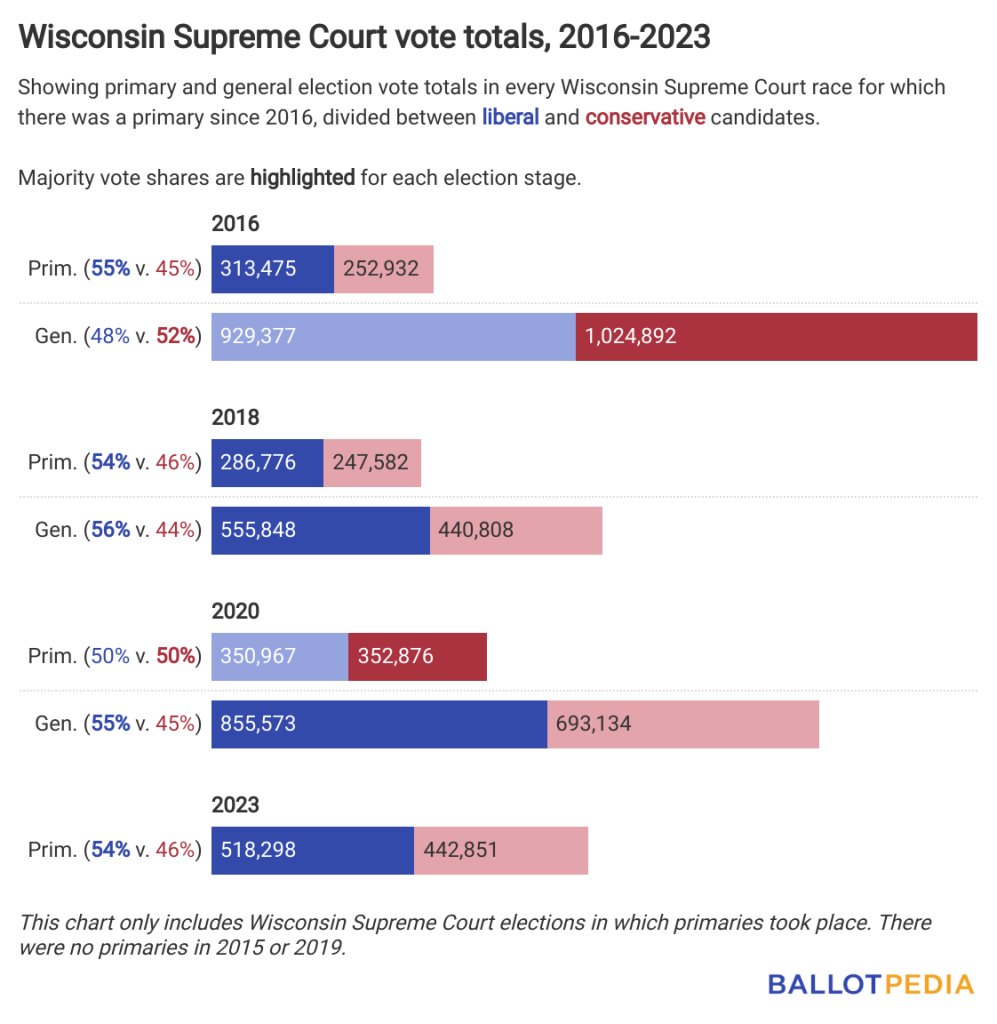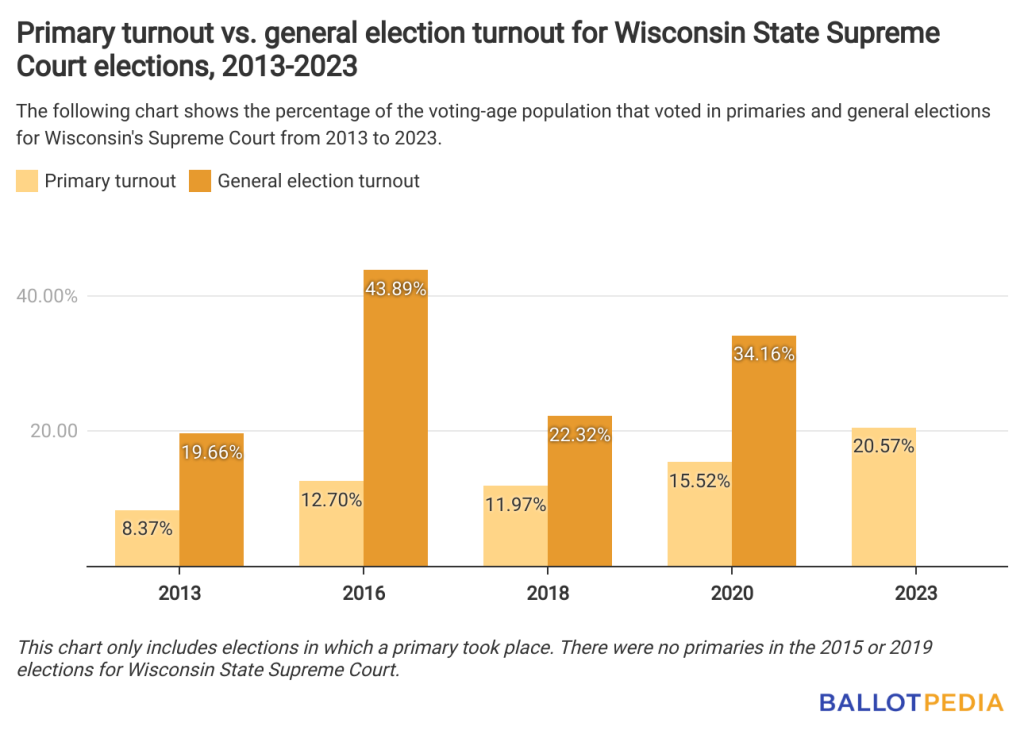Janet Protasiewicz and Daniel Kelly are running in the nonpartisan general election for Wisconsin Supreme Court on April 4, 2023. The elections are officially nonpartisan, but justices and candidates are often considered to be liberal or conservative. The current court is considered to have a 4-3 conservative majority. With Justice Patience Roggensack — a member of the court’s conservative majority — retiring, the general election will determine ideological control of the court.
In the four-candidate primary in February, liberal candidate Protasiewicz and conservative Kelly advanced to the general election after receiving 46.5% and 24.2% of the primary vote, respectively. Together, Protasiewicz and Everett Mitchell — the other liberal candidate in the race — received 53.9% of the vote, while Kelly and Jennifer Dorow — the other conservative — received a combined 46.1%.
Looking at the previous three state supreme court primaries, the combined share of the vote liberal and conservative candidates received in the primary indicated the general election’s outcome in 2018. That year, liberal candidates Rebecca Dallet and Tim Burns received a combined 53.7% of the primary vote, while conservative Michael Screnock received 46.5%. Dallet defeated Screnock 55.7% to 44.2% in the general election.
However, the 2020 and 2016 primaries did not indicate the general election results.
In 2020, Kelly, then an incumbent, received more than 50% of the vote in the primary, while the two liberal candidates — Jill Karofsky and Ed Fallone — received a combined vote total of 49.9%. Karofsky defeated Kelly 55% to 45% in the general election.
In 2016, liberal candidates JoAnn Kloppenburg and Joe Donald received a combined total of 55% of the vote in the primary, while conservative Rebecca Bradley received 45%. Bradley defeated Kloppenburg 52% to 47% in the general.

Turnout in state supreme court primaries in Wisconsin has been increasing in recent years, and the Feb. 21 primary was no exception. Nearly 21% of the voting-age population voted in this year’s primary, the highest turnout in a decade.
In 2020, 16% of the voting-age population voted in the primary, while in 2018, nearly 12% of the voting-age population did. In 2016, less than 13% of the voting-age population voted in the primary, and in 2013, only around 8% did. There were no primaries in 2015 or 2019.
Primary turnout can be a useful indicator of voter interest in a race, but it does not necessarily predict turnout in the general election. Turnout in the 2016 primary, for example, was lower than in the 2020 primary and less than 1% higher than in 2018. Still, turnout in the2016 general election was a record-breaking 44% of the voting-age population, considerably higher than the 34% turnout in the 2020 general election, and almost twice the 22.3% turnout in 2018.

The presence of other races on the ballot can affect turnout and vote share in the general election compared to the primary. The 2016 Supreme Court general election coincided with competitive presidential primaries for both the Republican and Democratic parties, for example, likely increasing turnout in the general election vs. the primary. The 2020 general election coincided with the competitive 2020 Democratic presidential primary, but there was no competitive Republican primary that year. Turnout for the liberal candidate increased more than turnout for the conservative candidate in the general election that year.
There are no presidential primaries in 2023, but the general election ballot will include three ballot questions, including a state constitutional amendment that would increase the discretion judges have to impose cash bail on people accused of violent crimes. According to NBC’s Sam Edelman, the presence of that amendment on the ballot could affect the turnout for the supreme court election.
Wisconsin has a divided government. The governor is Democrat Tony Evers, while the Republican Party controls both chambers of the state legislature. Wisconsin, along with Pennsylvania, is one of two states holding elections for state supreme court in 2023.
Learn More






